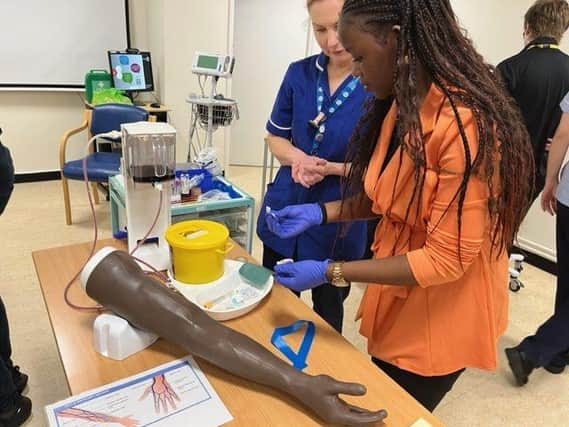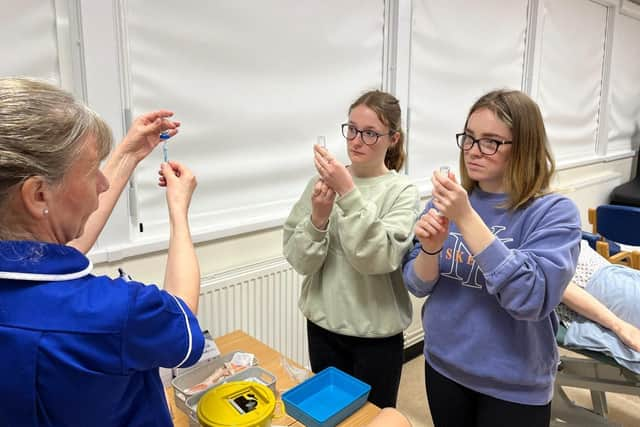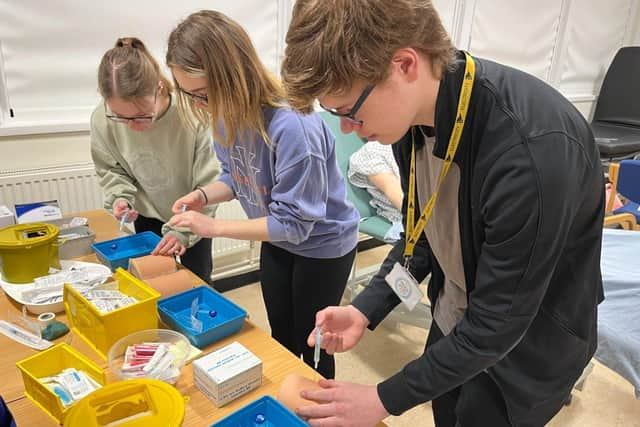Portsmouth STEM students get hands on experience at QA clinical studies workshop


Twelve young people from UTC Portsmouth, a specialist STEM college, took part in the hands-on event at QA Hospital, the first workshop of its kind.
The day was inspired by work which takes place in research hubs run by the National Institute for Health and Care Research. It was supported by staff from Portsmouth Research Hub (PRH) which enrols hundreds of participants from the local community every year in vital research studies.
Advertisement
Hide AdAdvertisement
Hide Ad‘We were really keen to get involved with this, to show just how exciting working in health research really is,’ said Johanna Mouland, Research Nurse Lead at PRH. ‘The young people understood instantly that any medication we take has to begin with research. It was great to them getting really hands on, handling injections and needles – they were so confident and enthusiastic.’


Students learned how anyone who comes forward to be part of a research study is carefully taken through a process of informed consent before they’re enrolled on a trial.
They also learned how to undertake essential health checks, to ensure the participant is fit to take part in the study. This included checking each other’s blood pressure, oxygen levels and heart rate.
Science teacher Andrea Hedegus said: ‘It has given the students a real insight into how clinical trials work, without over-glamorising it. So many careers aren’t obvious - and this shows all the different roles and routes available beyond nurse and doctor.’
Advertisement
Hide AdAdvertisement
Hide AdThe star attraction was the chance to work on a lifelike rubber arm. Using palpation, the students were able to locate the vein and draw a sample of mock blood. It was a very realistic training with students experiencing blood flashing back when entering the vein, and the importance of stemming the flow with pressure.They were also able to draw fluid into a syringe, and inject the contents into a skin and muscle block. Later in the day the group visited the pharmacy, speaking to staff there, before going to the Research Laboratory and having a tour of the hospital’s extensive microbiology departments, whilst also practising basic blood test skills using horse blood.


Alexia Seamer, 17, said: ‘Being able to actually do real things makes such a difference. I loved taking blood - I got it on the first try!’Martha Benford, 16, added: ‘I’ve really enjoyed being behind the scenes. I definitely would consider a career in this sort of area, maybe being a research nurse.’